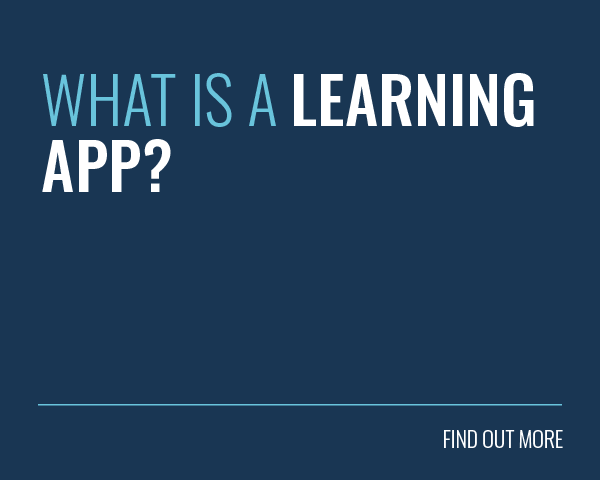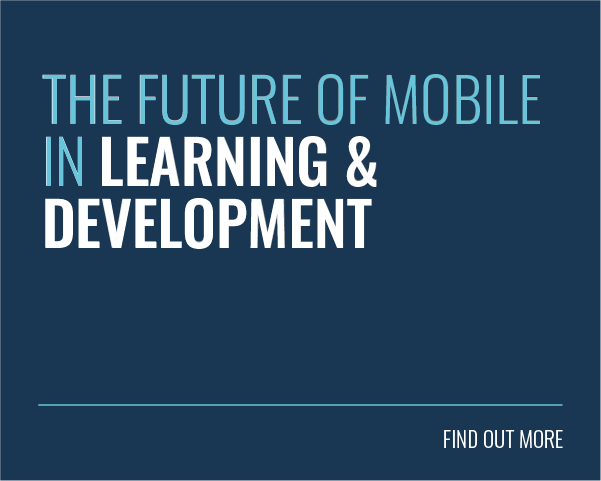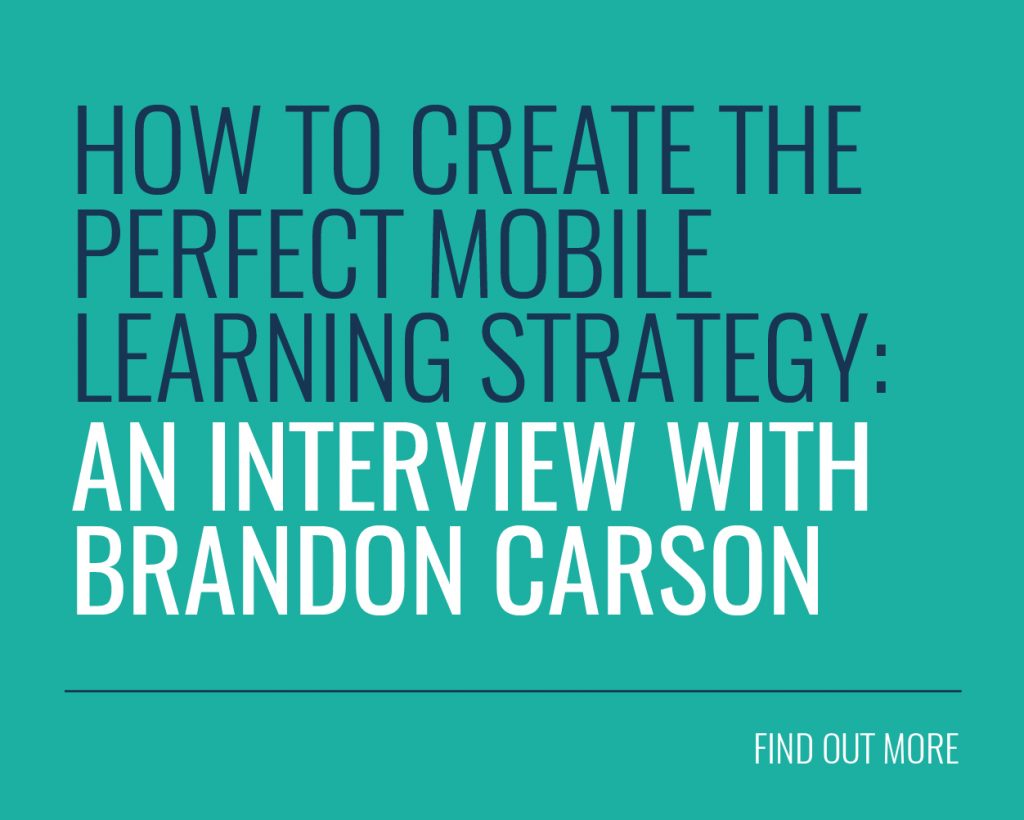We live in a mobile world and our mobile phones are a big part of our daily lives. In fact, mobiles surged ahead of desktops in 2016 when smartphone usage accounted for 51.3% of the market compared to desktop use (48.7%). This was the turning point for mobile devices. Smartphones are now taking over the world.
Ever since then, mobile devices stopped being futuristic tools and became the present. Smartphones have changed how we interact with the world. They are now an extension of ourselves.
As such, it’s only natural to use mobile devices for learning. As a result, learning professionals have started to introduce this tool into their training mix. Indeed, many have found that mobile learning helps to facilitate an effective training strategy.
Today, mobile learning is no longer a ‘nice-to-have’, but a crucial element of successful training initiatives.
Let’s explore mobile learning and see why it’s so beneficial!
What Is Mobile Learning?
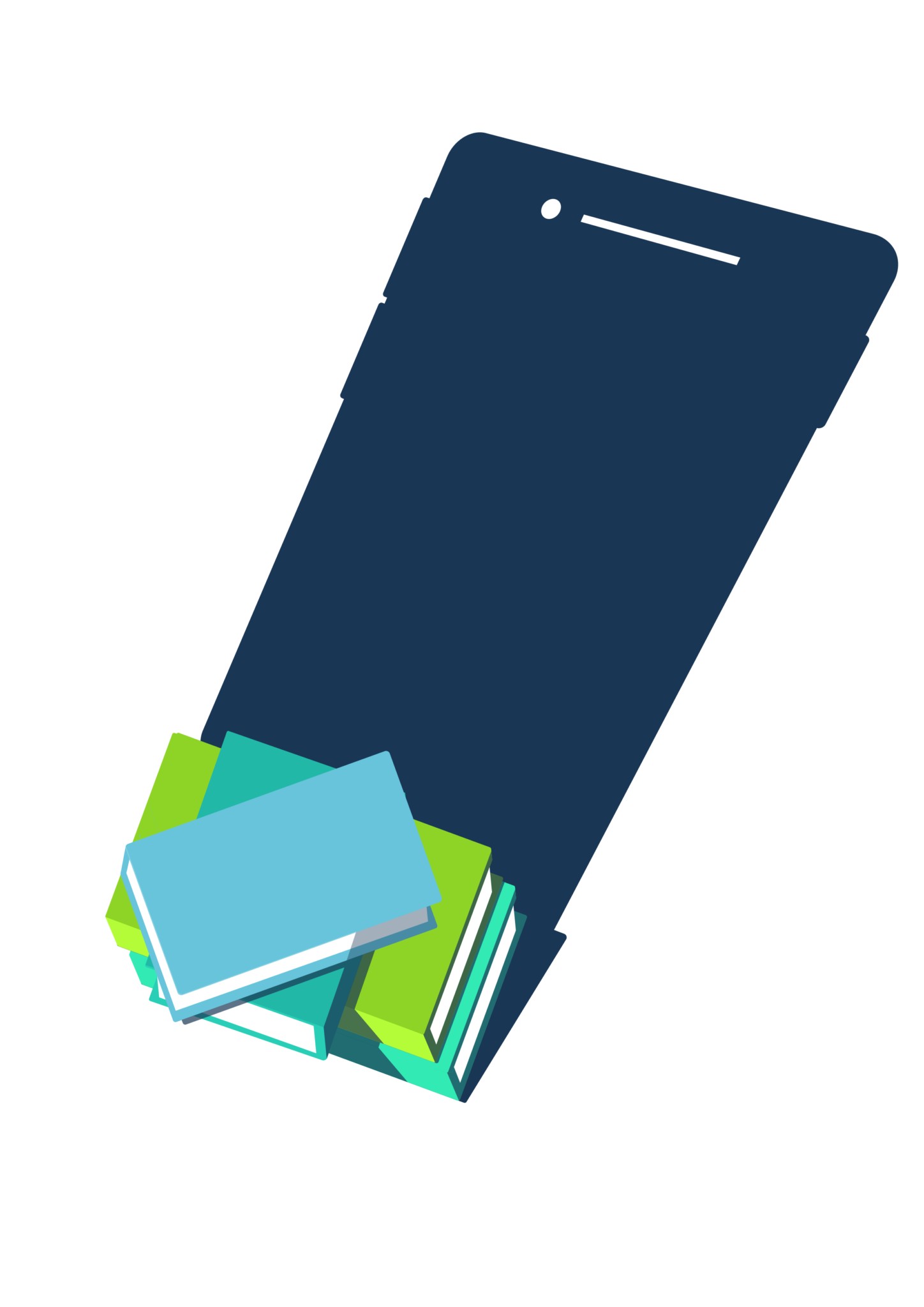
Mobile learning, also referred to as mLearning, can be defined as learning that happens on a mobile device with a wireless connection. This means that devices like smartphones and tablets are used as teaching aids.
The growth in mobile usage has been exponential. As such, it’s not surprising that mobiles are now an integral part of learning and development. It’s becoming the standard device we use to learn and train.
Mobile learning is a derivative of online learning, but they have some similarities. As the name suggests, the main difference lies in the training delivery medium. You can deliver online learning through a mobile device. However, online learning could be delivered through a fixed device, whereas this is not true for mLearning.
This convenient approach to training gives learners umpteen opportunities to learn without the shackles of a desk. However, it isn’t just online learning delivered on a mobile device.
Instead, mobile learning takes advantage of the delivery medium to create more focused training interventions. For instance, it has a big influence on training content delivery.
But before we explore the different features, benefits and brain science behind mobile learning, let’s wind back to the 1970s. We are going to explore where mobile learning came from!
History of Mobile Learning
American computer scientist Alan Kay introduced the concept of mobile learning in 1972. Working for the Palo Alto Research Center of the Xerox Corporation, he played a leading role in developing the Dynabook. This was a handheld multimedia computer that was intended as a mobile device for learning.
While the Dynabook was the first device to arrive on the mobile learning landscape, the technology was not advanced enough to ensure the invention would take off. In fact, it wasn’t until 1994 that Mitsubishi Electric Corp introduced the first smartphone ever, called IBM Simon.
IBM Simon came to the market with a premium price tag of $1,100 (equivalent to $2,100 in today’s money). As such, the smartphone was advertised as a high-end product with some dapper features. This included an address book and scheduler, an electronic notepad and even a calculator!
This smartphone heralded a new era in technology. Various manufacturers started introducing similar mobile devices. Before long, smartphones were ubiquitous. And ultimately, this is the beginning of mobile learning.
Essential Features
We have come a long way since IBM Simon was launched. Features that used to impress us are now considered standard. For instance, sending and receiving text messages, phone calls, emails and faxes are now the very basic elements of mobile phones.
So what features help you to craft an effective mobile training strategy? Let’s take a look!
1. Push Notifications
Sometimes all a learner needs is a timely reminder. Push notifications make this incredibly easy! They are part of many applications your users are already familiar with, such as Facebook, Twitter and Instagram.
Push notifications can help you to retain users and guide them back to your training interventions. In fact, they have been shown to improve user retention by up to 46%!
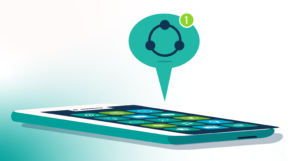
In addition, push notifications help to keep your learners more engaged. For example, research reveals that 26% of users abandon an app after one session. This figure goes down to 17% if the users have received in-app push notifications.
You can use this feature to notify your learners about social updates or content releases. In addition, push notifications offer a fast and easy way to send bespoke messages to your entire audience (or segmented groups) at once.
2. Offline & Online Sync
Offline is the new online! As such, syncing offline data effortlessly with online data should be a key consideration in any online learning solution, including mobile devices.
For many industries, offline functionality is an essential part of doing business. As such, to provide optimal learning conditions, you need to ensure that any offline learning that occurs can be synced up with your online learning solution when a connection is re-established.
Luckily, we have come a long way! Even if your learners have no access to Wi-Fi, they can still continue their learning progress. Modern mobile learning apps, like the Growth Engineering Learning App, allow learners to download content and then access it offline. It then synchronises the result next time your learners have an active connection.
This truly enables anywhere and any time training! No matter where your learners are, they can get their mobiles out and explore content effectively.
3. Push & Pull Content
Mobile devices are now a big part of our daily lives. But with so many other apps fighting for user attention, L&D professionals must ensure they coordinate their training well to keep learners engaged.
One way to do this is to push and pull content. Using a ‘push’ technique means sending your learners training content that you expect them to complete. This could be individual learning objects, or broader groups of content. Learners can access the ‘My Things to Do’ section on their mobile learning app to see what content they have left to explore.
The pull technique, on the other hand, gives learners control of what they learn and when. As such, it’s an on-demand type of learning where the experience is tailored to the learner’s needs. For example, they can self-serve training materials through their content library or ask for help from Experts.
With a push and pull approach, mobile learners have the freedom to explore at their leisure. This can lead to an increase in motivation and better learning outcomes. Nonetheless, push learning is still hugely relevant. It provides guidance and structure to the learning process.
4. Gamification
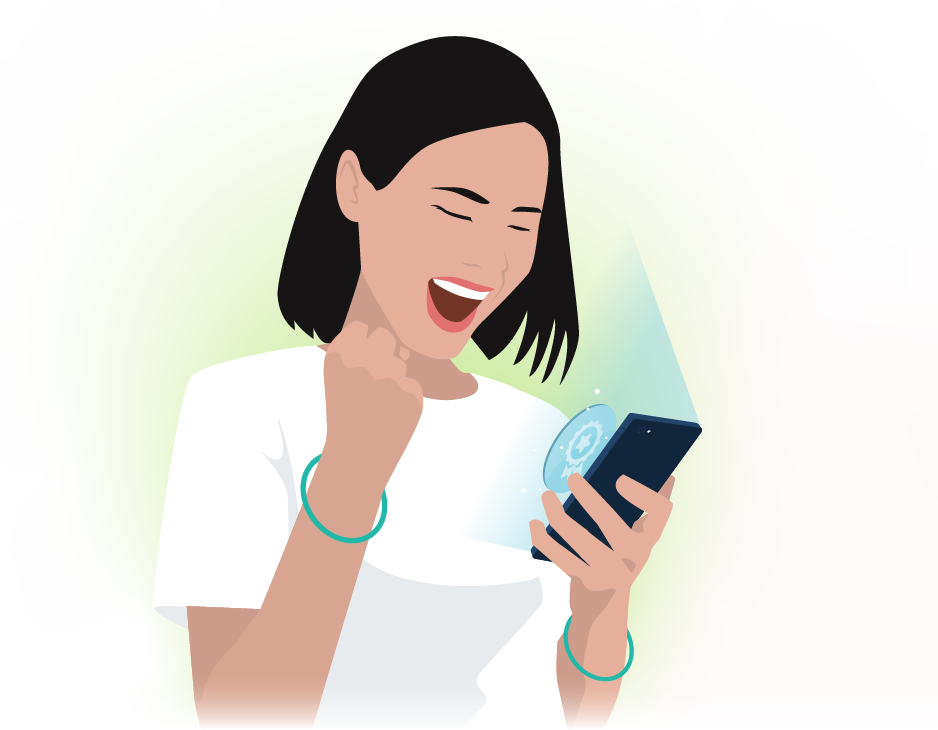
Gamification is extremely effective when it comes to user engagement. In fact, gamification has been shown to boost engagement by up to 60%. And it’s little wonder why! It typically takes 400 repetitions to forge a new synapse in the brain, but gamification can reduce this figure to 20!
With this in mind, most mobile learning applications are gamified to maximise learner engagement. Typical gamification elements include Experience Points (XP), Badges, Leaderboards and Streaks. These elements are linked together. As such, your learners earn XP and Badges when they complete content. In turn, this helps them to climb further up the Leaderboard.
Streaks, on the other hand, reinforce and reward desired learner behaviours. For instance, you could set up a streak to reward learners who log into their mobile solution for 10 days in a row. This helps you to encourage your users to keep coming back to your learning environment.
But that’s not all! We also provide more innovative features like Battles and Squad Battles. These peer-to-peer or group-to-group quiz-based Battles drive healthy competition. Your learners will fight to demonstrate their mastery. And as a result, you will find that your engagement levels soar!
5. Social Learning
Social learning refers to any knowledge we gain through observing or interacting with our peers. As we listen to their understanding or mimic their behaviour, we learn new skills and knowledge. And this kind of learning comes with vast benefits.
As such, it’s only natural that mobile applications are now enabling social learning and collaboration. Learning apps are no different!
Although mobile learning allows students to explore content at their own pace, it also lets them get in touch with their teachers and peers. The end goal is to share knowledge effectively.
Learners can then access this community-driven knowledge right at the point of need. After all, the tool is already in their pockets.
Apps, like Growth Engineering Learning App, give access to experiences, knowledge and insights through innovative social learning features. For example, we provide customisable Clubs that act as focused discussion groups where learners can share their knowledge and build a real community.
And our Clubs Live feature allows learners to take this functionality to the next level. Learners can now live stream or broadcast video content in the discussion groups they have joined. Clubs Live helps organisations to provide accessible and engaging user-generated learning experiences, all through a mobile device!
Benefits of Mobile Learning
The mobile revolution has changed how we learn. But it wouldn’t remain popular without some magnificent benefits! These advantages can result in an increased return on your training investment (ROI), making your mobile learning approach extremely profitable.
For instance, one of our clients, a Fortune 500 cosmetics company, saw impressive results after introducing our mobile learning application to their organisation. Territories that rolled out the app saw a 20% increase in sales compared to those that didn’t. These territories then saw the same increase after introducing our app. Impressive!
Let’s explore some of the benefits mobile learning holds!
1. Learning On The Go
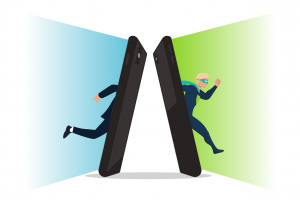
Today’s learners are busier than ever before. In fact, employees can only devote 24 minutes per week to learning and development. As such, learners want to have instant access to training. And that’s where mobile learning comes in!
One of the biggest benefits mobile learning offers is that learners can complete training anywhere and at any time. As such, your learners don’t have to be at a specific place to learn. Instead, learning content is freely available for them in their pockets.
This means your learners can learn on the go by getting instant access to relevant content! For example, your learners can use their commuting time for more productive tasks, like viewing a module on sales presentation tips or completing a simple assessment..
As a result, mobile learning promotes active experimentation. It allows learners to act voluntarily and at their convenience, which increases engagement. Similarly, other innovative features like social learning and gamification ensure learners can still communicate and get feedback on their training interventions.
2. Habitual Approach
Brits check their phones on average every 12 minutes. It’s clear that we are hooked! That means we have built up habitual patterns when it comes to our mobile devices.
And that’s one of the reasons why mobile learning works so well. Learners can use a tool that is already in their pockets. As such, your learners don’t have to implement change in their behaviours as the routine is already there.
As Charles Duhigg observed in The Power of Habit, almost 40% of our actions each day are the result of habits, not decisions. Imagine the impact you could have if learning becomes one of those habits.
3. Appeal To Modern Learners
The millennial generation forms an estimated 50% of the global workforce. These modern learners grew up in a different, more digital world. This means that they approach workplace activities differently, including L&D.
In fact, nearly all (9-in-10) millennials own a smartphone. This generation has grown up with digital devices. In fact, 90% say they always have their phone nearby. By focusing on mobile learning, you will be able to appeal to millennials and the following generation, gen-z.
Both generations are accustomed to using mobile devices and will appreciate learning via technology they already use in their daily lives. Mobile learning makes it easier to capture and hold their attention, especially when you mirror the design and user experiences they associate with their favourite apps.
4. Accessible Learning
Whilst we know that millennials stand out for their technology usage, older generations have also embraced a digital lifestyle. In fact, 6.37 billion people in the world own a smartphone. This is equivalent to a whopping 80% of the world’s population.
That means that mobile learning applications are widely accessible for many users. Learners no longer need to own a laptop or have access to a physical classroom to get the most out of their training.
5. Bite-Sized Content
Deloitte notes that today’s modern learners are overwhelmed, distracted and impatient. Our attention spans are shrinking, which means we struggle to focus on a task for long. In fact, while people touch their phones over 2,600 times a day, they don’t use their mobiles for prolonged periods of time.
Luckily, mobile learning goes perfectly together with microlearning! Microlearning units typically take less than 10 minutes to consume and consist of easily digestible material. This makes it easy for learners to explore complete learning units on the go through their mobile devices.
These concise and straightforward content formats hold plenty of benefits, including easier understanding and retention. This helps you to increase course completion rates and overall learner engagement. After all, experts say that microlearning has the power to make learning 17% more efficient!
6. Improved Engagement
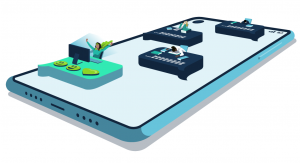
Mobile learning makes training more dynamic. Learners can learn at their own pace, which helps them to feel more comfortable with their training.
Similarly, mobile learning comes in various formats. These resources can include anything from videos and audio files to visuals, quizzes and gamified training units. Together, these resources make learning more fun and interesting.
But even more importantly, these different content formats help you to cater to different learning styles. After all, we all have our preferred way of learning. For example, the majority of the population are visual learners, while just 5% are kinaesthetic learners.
7. Customised Training
From Coca-Cola creating personalised drinks bottles to designing your own shoes at Nike, modern consumers expect a tailored experience. Similarly, learners today expect a personalised training experience, whether it’s online or offline.
Thankfully, It’s easy to ensure your mobile learning app feels like home for your learners. For example, our Growth Engineering Learning App is an engaging learning experience condensed into a simple and easy-to-use mobile platform.
Organisations can customise everything to make the app environment 100% their own. This includes creating a dedicated app icon, app store description, app name, colours, banners, terminology and more. In essence, each customer creates their own bespoke learning application.
This provides new opportunities to create narrative-based training experiences and drive Epic Meaning.
The Power Of Mobile Learning
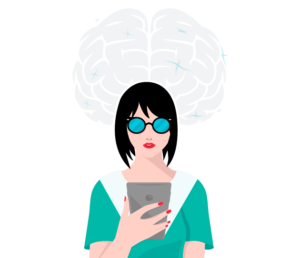
Based on all that we know so far, it’s safe to say that we are totally and completely hooked on our mobile phones. And that’s one of the reasons why mobile learning can be extremely effective and addictive.
Mobiles keep us connected, whether it’s through social media platforms, phone calls or text messaging. But our love for mobiles goes deeper than communication.
We have explored some essential features and benefits of mobile learning. But where does this power come from? Let’s take a journey through the brain and explore its relationship with the recent smartphone revolution.
The Hippocampus and Mobile Learning
Every time you learn something new, your brain creates a unique neural pathway. This pathway gets stronger the more you keep reinforcing this information. The hippocampus then stores this memory and feeds the information to brain areas that are responsible for learning.
However, access to the internet and mobile devices has changed our memory function. As knowledge is always at our fingertips, we work less to remember information. Instead, we quickly turn to Google and find out the answer.
Mobile learning tools create a similar situation as learners can access training content or knowledge at the point of need. This benefit also makes it easier than ever to repeat training sessions.
Similarly, short microlearning units ensure you can learn even if you have just five minutes to revise here and there. The more you repeat the learning modules, the stronger the memory becomes.
As such, you need to build your mobile approach with repetition in mind in order to stimulate your learners’ hippocampus effectively!
Endorphins and Mobile Learning
Endorphins are chemicals that work by passing messages between neurons. These ‘feel-good’ chemicals can relieve pain and boost happiness levels.
Creating learning interventions that release endorphins can help encourage deeper levels of engagement. One way to do this is to gamify your learning app. By applying game mechanics to your training interventions, you can introduce an exciting, competitive edge to learning.
This competition releases endorphins and makes your learners push harder to win more XP and climb up the Leaderboard. This, in turn, will motivate your learners to keep learning. Before long, they’ll achieve true subject matter mastery!
Dopamine and Mobile Learning
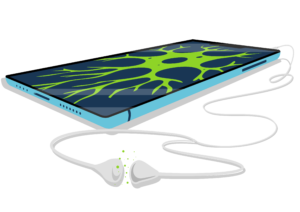
Dopamine is another ‘feel-good’ hormone that influences our mood and feelings. Your nervous system uses dopamine to send messages between nerve cells. This is the chemical that gets released when you eat your favourite food or have successful social interactions.
If you’re having a pleasurable experience, it’s because you’ve triggered the release of dopamine in your brain.
Whenever you receive a notification from a social media site, your brain releases a dopamine hit. Similarly, we get this same hit when we win a reward or gain recognition.
Knowing how your learners receive a dopamine boost can help you to create effective training interventions. For example, social learning features and gamification are an excellent way to produce dopamine. Including those to your mobile training programme is a great way to take advantage of our hormones!
Final Words
Mobile learning has taken the world by storm. It’s no longer a ‘nice-to-have’ but a necessity for accessible, effective and relevant training.
And no wonder why! Smartphone usage has skyrocketed in the last decade, making it a common tool. In fact, you might even be reading this article on your mobile. Given the accessibility, ease of use and innovative features, mobile learning has a set place in the future of L&D.
Are you still thirsty for some more mobile learning knowledge? Our comprehensive guidebook will help you to supercharge your mobile learning strategy in no time!


